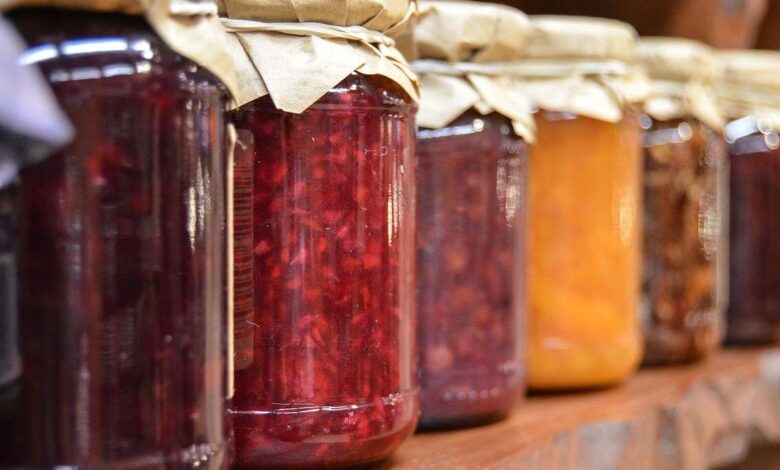If you are looking to buy a bottle or jar, you’ll need to know a few things. The material used to make the packaging is important, and it affects the taste and shelf life of the product. You’ll also want to consider how environmentally friendly the packaging is. There are other options, however, if you’re concerned about the environment. If you notice a mistake on this page, send a message to the author with the relevant details.
Materials
Traditionally, glass jars and containers were used to pack food items for long-term storage. However, today, we mostly use plastic and canned products, although people still show a great interest in bottles. This is because of the increasing concern over human health and the harmful effects of plastics. Therefore, scientists and researchers are working hard to develop more environmentally friendly packing materials. Here are some of the most common materials used in bottles and jarred packaged goods:
Glass is a common material used for bottles and jars, particularly in the food and beverage industries. This material has many benefits but is not perfect. Learn the advantages and disadvantages of glass packaging before you decide to use it for your products. Glass is a renewable resource and is easy to recycle. The main advantage of glass is that it can be reused infinitely. It is an ideal option for food preservation and is recyclable.
Shelf life
If you’re concerned about the shelf life of your food, you should know the difference between jarred and bottled packaged goods. While jarred packaged goods tend to have a shorter shelf life, some need to be refrigerated for a longer period of time. And when it comes to packaged food, jarred food is also often referred to as canned food. The main differences between these two types of packaged food are listed below.
Most perishable foods and pharmaceuticals are packaged in bottles or jars. Their expiration dates are often far ahead of their actual use dates, which makes it necessary to extend their shelf life. However, jarred foods, like frozen vegetables, do not need to be refrigerated for long periods of time. They will retain their flavor longer. Therefore, you won’t have to replace them often.
Safety
Bottled and jarred packaged foods have been around since Ancient Egypt. People have used jars and bottles to store food for later use. Some jars and bottles are more durable and have the advantage of containing bacteria, making them a safer choice for storing food. Bottles and jars are also used to transport household cleaning products, reducing the risk of contamination of the contents. Bottles and jars have many benefits, and this article will cover why these products are so popular today.
First and foremost, the containers of packaged food and beverages are safe to use. Bottled water is safer than tap water, and many other food products are packaged in jars. Unlike canned food, jars can be stored for longer periods without becoming contaminated. Jars also extend the shelf life of foods, making them a more convenient choice for those on a budget. Jars are also recyclable.
Cost
Bottled and jarred packaged goods are widely available at grocery stores. They tend to be less expensive and last longer than unpackaged products. They were particularly attractive to consumers after refrigeration was invented in the nineteenth century. Before this invention, bottled and jarred packaged goods had limited utility. The invention of refrigerated transport in 1712 by Thomas Newcomen made these products extremely useful. Iceboxes enabled people to keep their meals cold for several hours.
As for packaging, jarred goods are easier to store and move. Jarred packaging can be easily recycled. However, bottle packaging requires more energy to make and transport, so the final cost of the jar is higher. Bottles are also more expensive to ship. But jarred packaging is more attractive to consumers. Jarred packaging is more environmentally friendly and requires fewer raw materials than bottles. Jarred packaging is the best choice for those who are concerned about environmental concerns.
Market share
Whether you are starting your own business or selling food, choosing packaging is critical. Choose the wrong kind of packaging and you could end up with less-than-stellar results, or an overpriced product. In this article, we will discuss the benefits and drawbacks of bottled and jarred packaged goods and why you should choose one over the other. Listed below are some reasons to use one type of packaging over the other.
As a growing industry, the food and beverage industry is using different packaging systems. Some packaged goods are sold in glass jars, plastic tubs, and cans. For convenience and health, jarred and bottled foods are ideal for transportation. These types of packages are widely used in hospitals, schools, and grocery stores. Whether you’re looking for a snack, a healthy dessert, or a healthy meal, there’s a packaging type that’s right for you.
Applications
There are many applications for bottles and jarred packaged goods. These containers are often made from zinc-plated steel, making them resistant to acidic and corrosive food. They are durable and reliable. However, many consumers prefer wood packaging. It is eco-friendly and recyclable. However, wood does not last as long as metal, so be sure to choose the right one for your product. To learn more about packaging, read on!
Final Words:
While jarred packaged goods are widely available in grocery stores, consumers are not always happy with them. Some consumers find jarred packaged goods to be problematic in everyday life, such as dressings and honey mustard sauce, which need to be warmed before being consumed. While this trend is becoming increasingly popular, it has some drawbacks that make it a poor choice. Here are just a few of the disadvantages of jars and their applications.

